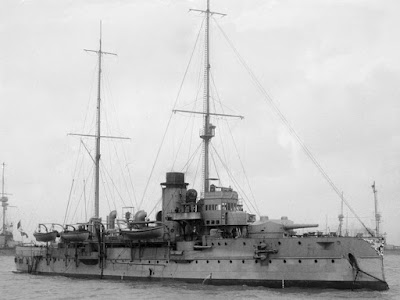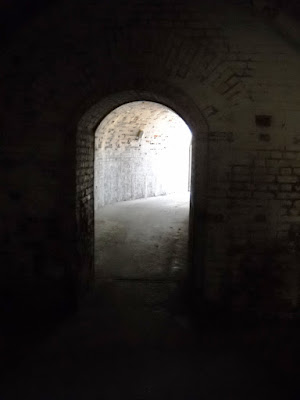HNLMS Jacob van Heemskerck began life as a coastal defence battleship in the Royal Netherlands Navy. She entered service in 1908, and had an active career representing the Netherlands across the world. When the Second World War broke out she was serving as the floating battery ship Batterijschip IJmuiden off Ijmuiden. She was scuttled by her crew during the German invasion in 1940.
When built, her characteristics were:
When built, her characteristics were:
- Displacement: 4,920 tons
- Dimensions:
- Length: 321’ 6”’ (98m)
- Beam: 49’ 10” (15.19m)
- Draught: 18’ 8” (5.69m)
- Speed: 16.5 knots
- Propulsion: 2 shafts powered by reciprocating engines
- Armour: Belt: 6” (150mm); Turrets and Barbettes: 8” (200mm)
- Armament: 2 × 9.4” (240mm) guns (2 x 1); 6 x 5.9” (150mm) guns (6 x 1); 6 x 2.9” (75mm) guns (6 x 1); 4 x 1 pdr QF guns (4 x 1); 2 x 18” (450mm) Torpedo Tubes
- Complement: 340
A silhouette of HNLMS Jacob van Heemskerck.
She was raised and taken in German service in 1941, renamed Undine, and converted into a floating anti-aircraft battery. When converted into a flakschiff, Undine carried:HNLMS Jacob van Heemskerck.
- 8 x 4.1” (10.5cm) SK C/32 gun (8 x 1)
- 4 x 40mm Bofors guns (4 x 1)
- 16 x 20mm guns (4 x 4)
After the war she was renamed Neptunus and was used as an accommodation ship. She was finally decommissioned and sold for scrapping in 1974.A silhouette of KMS Undine.






















































































.JPG)













